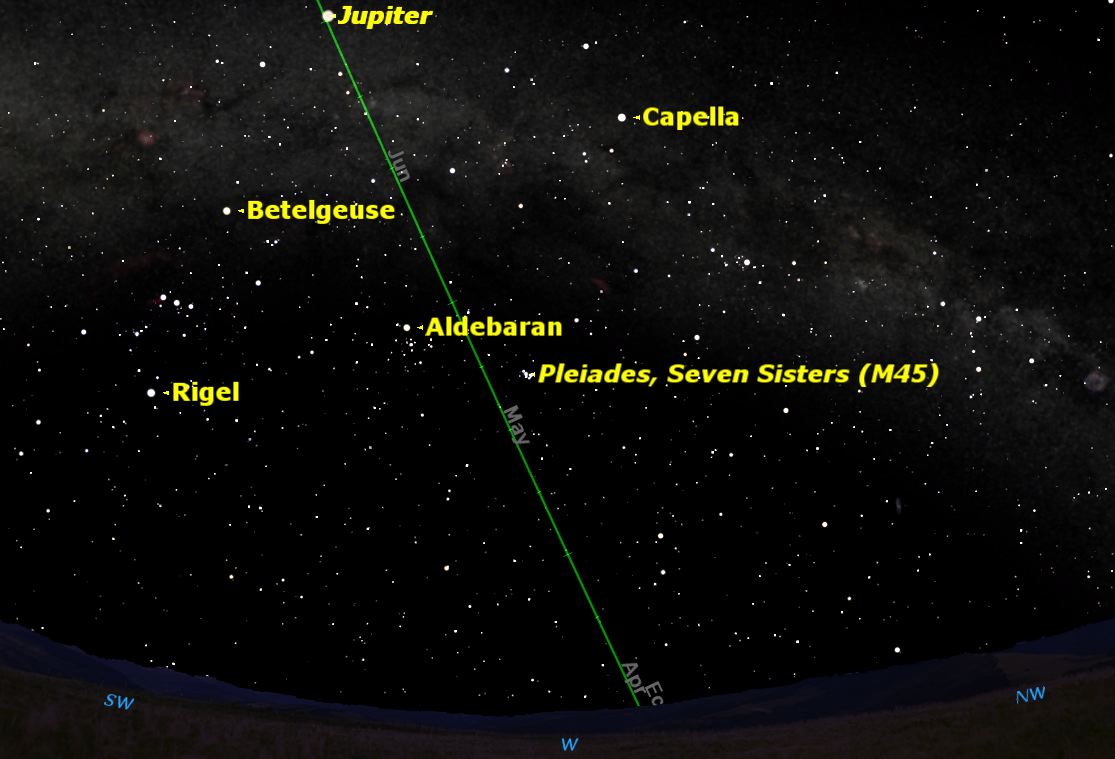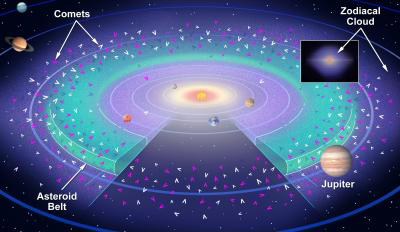See the Faint Zodiacal Light in March Night Sky

What is the faintest thing you can see in the night sky with your naked eye?
For many city dwellers, seeing even a handful of the brightest stars in the sky may be a challenge because of widespread light pollution. We light our cities brightly at night, dimming even the brightest stars.
But what if you live under (or visit someplace with) clear dark country skies? You will be able to see thousands of individual stars. You will be able to see the Milky Way, the combined light of the billions of faint stars which make up our Galaxy. If you know exactly where to look, you may be able to spot one or two external galaxies, such as Andromeda in the Northern Hemisphere and the Magellanic Clouds in the Southern Hemisphere. [Amazing Night Sky Views for March (Skywatcher Photos)]
Yet there is something even fainter that you can see, without any optical aid, under truly pristine skies: the zodiacal light.
Zodiacal light explained
So what exactly is the zodiacal light?
There are millions of objects orbiting the sun. These include planets, dwarf planets, asteroids, and comets. But there are millions more objects, much smaller than these, ranging downward in size to tiny grains of interplanetary matter, the size of sand grains or even smaller. These are too small to be visible as discrete points of light, but like the faint stars in the Milky Way, their combined light causes a faint glow in the night sky. Since these tiny objects cluster along the ecliptic, the path of the sun and planets across the sky, which the ancients called the zodiac, we call this glow the zodiacal light. [Rare Sight: Zodiacal Light & the Milky Way (Video by Justin Ng)]
Get the Space.com Newsletter
Breaking space news, the latest updates on rocket launches, skywatching events and more!
Most people, even experienced stargazers, have never seen the zodiacal light. In fact, most people in the 21st century have never seen the Milky Way, which is far brighter.
Although the zodiacal light is visible from dark sky sites on any dark moonless light, you can improve your chances by looking at the right time and date. The next two weeks are about the best time this year for observers in the Northern Hemisphere, because the ecliptic is at a very steep angle to the horizon at this time of year. The moon has moved into the morning sky, leaving evening skies dark.
How to see the zodiacal light
It's important to wait until your sky is completely dark. This happens when the sun is at least 18 degrees below the horizon. This means that you will need to wait at least an hour and a half after sunset. But don't wait too late. The zodiacal light moves across the sky with the sun, so it will be setting too.
Looking west an hour and a half after sunset, you will see the Milky Way arching across the sky, marked by the bright stars Rigel, Betelgeuse, and Capella. The ecliptic rises almost vertically from the western horizon, marked by the Pleiades, Aldebaran, and Jupiter high in the sky.
Once you can see the faint glow of the Milky Way, look below it for an even fainter glow rising upwards from the horizon.
You may need to use an astronomer's trick here: averted vision. The part of the human eye most sensitive to faint light is not in the center of our visual field, but slightly off to the side. So often you can see things that are very faint by not looking directly at them, but rather slightly off to the side.
When you actually see the zodiacal light in the night sky, you will see it as a broad cone of light, broader at the horizon and tapering towards the zenith.
You will be seeing the combined glow of sunlight reflecting from millions of tiny particles, each and every one of them in their own orbit around the sun.

As the Earth moves in its orbit around the sun, it moves through this cloud of interplanetary dust, and we see the individual impacts of these dust particles with our atmosphere as meteors, or "falling stars."
The zodiacal light is brighter towards the sun, because the particles concentrate in that direction, and are closer to the sun. But there is also a brighter spot directly opposite the sun in the sky. This is called the gegenschein or counter-glow. The interplanetary particles act like the letters on a highway sign, and reflect more strongly when directly opposite the source of light, in this case, the sun.
Editor's note: If you snap a great photo of the zodiacal light and the Milky Way, or any other night sky view, and would like to share it with Space.com for a story or gallery please send comments and images to managing editor Tariq Malik at: spacephotos@space.com.
This article was provided to SPACE.com by Simulation Curriculum, the leader in space science curriculum solutions and the makers of Starry Night and SkySafari. Follow Starry Night on Twitter @StarryNightEdu. Follow us @Spacedotcom, Facebook and Google+. Original article on Space.com.
Join our Space Forums to keep talking space on the latest missions, night sky and more! And if you have a news tip, correction or comment, let us know at: community@space.com.

Geoff Gaherty was Space.com's Night Sky columnist and in partnership with Starry Night software and a dedicated amateur astronomer who sought to share the wonders of the night sky with the world. Based in Canada, Geoff studied mathematics and physics at McGill University and earned a Ph.D. in anthropology from the University of Toronto, all while pursuing a passion for the night sky and serving as an astronomy communicator. He credited a partial solar eclipse observed in 1946 (at age 5) and his 1957 sighting of the Comet Arend-Roland as a teenager for sparking his interest in amateur astronomy. In 2008, Geoff won the Chant Medal from the Royal Astronomical Society of Canada, an award given to a Canadian amateur astronomer in recognition of their lifetime achievements. Sadly, Geoff passed away July 7, 2016 due to complications from a kidney transplant, but his legacy continues at Starry Night.










